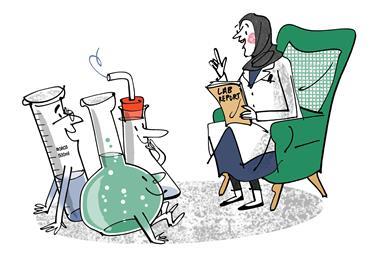What happened to your Christmas roast – and how to make it better next year
Should you put your Christmas turkey in brine? The answer is a resounding yes. If you have never brined meat before, a juicy, succulent holiday roast is the perfect place to start. And, if you are a brining master and have experienced the transformations it influences, then a nod to you, my fellow ‘gastronaut’. Either way, it’s worth exploring what happens in this salt-laced (protein) thread of flavour chemistry.
Fowl play

First, let’s look at the composition of a turkey. A raw, whole bird is around 72.7% water, 21.6% protein, 5.6% lipids and 0.13 % carbohydrate, with good sprinkling of minerals. Most of its nutrients are woven into muscle cells or fibres that form tight bundles, trapping the water. There’s not a lot of ‘marbling’ (intramuscular fat) in turkey meat, which makes it leaner compared with beef, lamb or pork.
Perhaps it goes without saying, but raw turkey is insipid and inedible. Even if you could lower the risk of food poisoning to near zero, it would still be difficult to consume even a small portion of raw turkey. However, by introducing energy to the bird in the form of heat, dramatic changes in its physicochemical – and therefore sensory – properties occur. An unpalatable chewy gristly mass is transformed into a juicy, crispy, aromatic, golden brown culinary symbol of wholesomeness and comfort.
The primary difference between the composition of a raw and roasted bird is that, once cooked, water content decreases to 63.5% – so it seems counterintuitive that roasted meat tastes juicier. The reason is that, when heated, protein strands start wriggling around, giving up hydrogen bonds. This denaturation ultimately unravels the protein bundles and releases some of the trapped water. The new architecture is much less structured and rigid, with water still trapped in between the now looser protein strands – creating juiciness. However, if too much heat is introduced, coagulating proteins squeeze out water and lead to dry meat. Brining can reduce this risk by starting with more water in first place.
Time to brine
Brines are typically comprised of water, sodium chloride (3–12%), and sucrose (3%). Meats are added to the brine and refrigerated for three to 24 hours, depending upon the solute concentrations and the geometry of the cut of meat. Initially, the process of diffusion draws salt from the brine into the muscle cells and unravels the protein bundles by disrupting or neutralising charged moieties on their side chains. Some proteins become fully dissolved in the aqueous phase of the meat, enhancing the mouthfeel of the meat’s juices. Then, through osmosis, water (along with its tasty solutes) is drawn into the muscle cell, between the loosened protein fibres. After brining, the meat is approximately 6% higher in water content.
Chefs brine lean meats like turkey for flavour enhancement and reduce risk of over cooking (ie dry, crumbly meat). Of course, flavour is the integration of all sensory stimuli (physical and chemical) perceived when eating food. When it comes to turkey, it’s not just about moisture, but also the golden brown hue of the crispy skin; the sound of the skin when it crunches; and the aromas originating from reactions between amino acids and sugars that dissolve into the lipids. Sensory research[1] conducted among culinary professionals has shown that brined, roasted turkey scores higher than unbrined roasted turkey. The verdict is clear: if you want to get the most out of your roast, you should brine it first.
Recipe book: brined turkey for beginners
I suggest using skinless boneless turkey breast if this is your first attempt to brine meat. You can then move on to leg quarters, before finally brining a whole bird.
Ingredients
- Turkey breast 2kg
- Koshering salt 80g
- Sugar 30g
- Water 2 litres
- Vegetable oil to taste
Instructions
- Dissolve the koshering salt and sugar into the water (the container does not matter – a large pan or even a bucket will work)
- Submerge the turkey breast into the brine, ensuring it is completely underwater, then refrigerate for 18 hours
- Remove the turkey breast and pat the surface of the meat dry, then lightly coat with vegetable oil
- Lightly coat the meat with vegetable oil and place on a wire rack above a sheet tray in a pre-heated 204°C oven
- Cook the meat until the internal temperature is about 79°C
- Remove from oven, allow the meat to rest at room temperature for 20 minutes, then enjoy
References
[1] M Krasnow and R Loss, J. Culinary Sci. & Tech., 2013, 11, 299 DOI: 10.1080/15428052.2013.798565












No comments yet